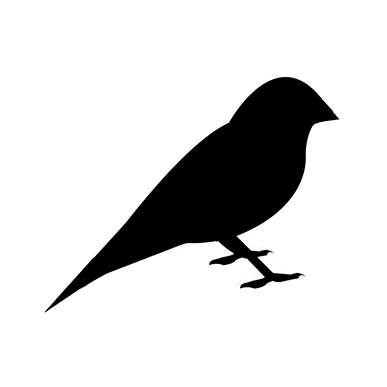The cool thing about these paintings is that the scientific model — “I’m investigating, experimenting with painting, so I know how to move from one painting to the next” — doesn’t apply with Reinhardt.
It’s like the surface, or the matter, or the substance you’re making is between the lines. Not a net, or an armature, but a field.
He must have painted on them flat. I can’t figure out why they would look wrong if you flipped them upside down. They’re jazzy.
Ad Reinhardt, Abstract Painting, 1963 (detail). © Estate of Ad Reinhardt / Artists Rights Society (ARS), New York. Please see our fair use disclaimer.†
I think Reinhardt’s model was more like building cathedrals, a sort of Gothic-guild mentality, like “I’m a professional painter, so I’ll figure out the best way to make paintings, get it down, and do it all the time,” which is kind of a cool model. Do your job and shut up.
John Zinsser Does the black in these paintings come from some French tradition?
Carl Ostendarp It seems like he was already looking at Mondrian; so the black is there as drawing — to anchor things down. They look a little like early Cubist paintings — tinted, hand-colored, fuzzy.
JZ What did he allegedly think he was doing? Working out of Mondrian?
CO He must have gotten the grid from Mondrian. It’s the all-over thing. He inherited the grid and approached the problem as, How do you open it back up without picturing things? Or picturing structures? The color is so decorative. It’s nice how there’s always light coming from behind. They’re like Ryder’s paintings in that way, silhouette in front and light behind, even the fuzzy ones.
JZ What do you think of the use of the vertical format?
CO It’s a nice library size. He probably did them that way so that they wouldn’t look like landscapes. They’re vertical like bodies. The cool thing about these paintings is that the scientific model — “I’m investigating, experimenting with painting, so I know how to move from one painting to the next” — doesn’t apply with Reinhardt. He’s always working to make each painting totally definitive. The fuzzy ones, I wonder if those are from the same time as the black calligraphic ones. All the brushing on top of these, it locks all the “bricks” back in there. The frames are nice too, they’re all the same — all grey. They kick up the color, no matter what the color is.
JZ Are these painted gesturally, instinctively? Or does he methodically transpose geometric schemes from paper to canvas?
CO I think they must have been improvised over a grid, the same way that the calligraphic ones are done on a grid. They’re probably a little of this and a little of that, but it seems like there’s always one governing color that controls the whole thing. They’re all-over geometric paintings that have these weird color effects you don’t expect. In the early fuzzy ones, the first “brick” ones, the brightest colors are on top of everything else, so that the paintings bulge out toward you. And in these, the bright stuff, the light, is buried underneath the field. The colors look really dusty and mat. It’s like night, looking at them, like being hung-over, when your eyes are half-closed.
JZ There’s no drip-down suggestion of gesture, even though he uses all this turpentine.
CO He must have painted on them flat. I can’t figure out why they would look wrong if you flipped them upside down. They’re jazzy.
The cool thing about these paintings is that the scientific model — “I’m investigating, experimenting with painting, so I know how to move from one painting to the next” — doesn’t apply with Reinhardt.
JZ Do you think they’re supposed to look like they have this implicit optimism in them, or is it a color thing that starts hitting you for reasons that are random?
CO Probably for reasons that are random. They have this weird generic quality about them, like if you’re going to be painting with a brush and making all-over geometric paintings, then they’re going to look like this — you’ve seen it before. It seems like they’re really all about wedding the color to the geometry, as if he figured out that if you just do the grid it’s going to get kind of boring. You’ve got to kick the color into gear and make it do all the work. Great titles: “Abstract Painting” — they’re definitely abstract paintings. There’s no doubt about it.
JZ This one has the invisible stuff.
CO It also has the reversible stuff. It’s the first one to have totally reversible stuff. Instead of having an axis running vertically up the center, it’s halfway-up, head-height, horizontally, the top and bottom mirror each other, stacked. It’s like luminist painting, back-of-your-eyeball color. It’s hard to read all at once.
JZ Did it look to people like Lever House and all the International Style architecture that was beginning to happen in the 1950s in the U.S.?
CO I don’t think so because that stuff was so much about material, and this is so much about color. Like, he was the only guy to come out of the American Abstract Artists group who made paintings that looked newer ten years later.
JZ As opposed to someone like Burgoyne Diller?
CO Or Fritz Glarner who was like, “Now I’ll make the grid lean a little bit,” or Stuart Davis, “Now it will get funkier”; but basically the language stays the same.
JZ How is this different from what Yves Klein was doing in terms of date, approach, or ideas?
CO With Klein, it was “copywritten color” — like an indexing thing. Whereas Reinhardt’s blue suggests a certain literal space. You’ve seen blue in painting before, so it naturally cues your eyeballs. You get big psychic spaces in these tight geometric paintings. He was trying to get the color to function in this particular, experiential way.
JZ Do you think these are moving toward a more literal presentation, though, are they trying to isolate color in a really specific way? With the multi-panel ones, it seems like any time you use that type of format, it starts to point to its own structure. Color has a structural role.
CO It’s like the format has been shrunken down so that it can accommodate only a certain number of bricks. Every brick is basically the same size. Plus they do the hard-to-see, pop-back-and-forth, what’s-figure-and-what’s-ground thing, but they “equal up” perfectly. It’s another way of having the grid without having to actually draw a grid. Normally, when you sit down to make a grid, you draw all the lines, and you say the grid is those lines. But in these paintings, the grid is the spaces in between those lines. It’s like the surface, or the matter, or the substance you’re making is between the lines. Not a net, or an armature, but a field.
JZ Did you see? That was Frank Stella who just breezed through here.
CO Really? We should get him over here. He might have some choice insights. Actually, he probably wouldn’t be very forthcoming. He’d start talking about Caravaggio and Moby Dick.
It’s like the surface, or the matter, or the substance you’re making is between the lines. Not a net, or an armature, but a field.
JZ What about the shift in these to a more intimate scale?
CO I think they’re Reinhardt’s version of icons or mandalas — small, contemplative objects. I think that’s the reasoning for the scale, and for all this centrifugal-centripetal, in-and-out breathing stuff. You read the space as background, then foreground. It’s also because they’re so hard to see, because they’re blue.
JZ What is his relationship to the whole religious or spiritual conundrum?
CO He describes everything in terms of negatives. The point of the writing is that you can’t say it’s a religious thing, or it’s a formal thing, or it’s an action painting thing. What he’s saying no to is any one of those things separated from any other. It’s really about the experience of standing in front of them — seeing them. They’re like Newman’s in that they give you all these cues for where to stand and they make this directional appeal to your experience. They’re created in terms of their effect. There’s so little presence in them — brushing, or changing his mind, or improvising — so you don’t think about his work at all.
JZ As they approach monochrome, you lose the hard-edged geometry and begin to get a fuzzed condition.
JZ It’s the same thing as in the early paintings where you seem to have a screen coming through from behind.
CO Everything keeps changing place and becoming that screen of light. In a twisted way it’s like that Magritte painting where you have these houses on a street and it’s night on the street because all the lamps are on and then you have daylight up in the sky.
JZ How does this stuff relate to Malevich’s Suprematist ideas?
CO They’re not much like the early ones, the really iconic ones, where he always has a figure/ground thing. But the later versions, especially that large painting of the black square in the Met show — you know, after he had done the sputnik paintings — was really like a painting of the intersection on the cross without the horizontal or vertical gestures, this entropic thing. Or in the later painting of the black circle: the amount of area in the circle was equal to the amount of area in the surrounding space so that they’re like these equal, radical deductive structure paintings. But not as obvious, or as readable as the Reinhardts. The Reinhardts are so matter-of-fact, in-your-face, plain. The other cool thing about them is that all these blue paintings have different colors in them, but they basically look the same in the room. It’s like trying to fine-tune your color TV. It’s virtually the same blue.
JZ Now we’re getting into the Peter Halley room.
CO Yeah. That one is really circuit-like. It’s like one single flip-flop per painting. These are really clear. They’re also more distinctly different color to color than the blue ones.
JZ And all these have symmetry, every single one is symmetrical.
CO Both kinds. They’re both bilaterally and axially symmetrical; side-to-side and top-to-bottom. I keep wondering why the ones that are vertical look right vertical and the ones that are horizontal, horizontal.
JZ Do you think he was aware of the same kind of flowchart associations that Halley is playing with now?
CO You mean the ways that geometry can be read referentially?
JZ Either that or are they supposed to be literally charged with this energy that is relational to the color?
CO I think the color is supposed to be charged color — and it is. That’s a major part of whatever is literal about them. They’re not drawn relative to a scale. They’re just big. They don’t have to reference a blinding sunset or neon light because the colors are already bright.
JZ They do this strange tab thing: these tabs come in from the sides and hold down the color fields.
CO That one has the tabs in the corners. All you would have to do is cut them out and you’d have one of those Stella silver-notched paintings — maybe we should go get Frank.
JZ He was through here so quickly. I couldn’t believe it.
CO He’s probably not that into it.
JZ He just takes a cursory look so he can say . . .
CO Yes, I know, I know. When Wolff Gallery had that little Reinhardt up, Joseph Kosuth was in a lot looking at it. I think it’s kind of funny that Kosuth might be more into these than Stella.
JZ To his defense, Stella is probably pretty familiar with these paintings.
CO Sure he is. How could he not be? I just think it’s funny that the things you would assume would have appealed to Stella, or did appeal to Stella — you know, in Stella’s all-black paintings — could have gotten boring after a while. But the way these paintings relate to Reinhardt’s writing and his cartoons must be the thing that Kosuth is into, like defining what art is, and making art be the definition of itself — that or just all the black.
JZ What was Greenberg’s position on Reinhardt?
CO Because his paintings were no fun to Greenberg. There was no “taste” in them. They’re relentless, but there’s no attempt to make them heroic. They’re not really out-and-out relational, there’s nothing from France in them.
JZ But to our eyes, they don’t look cold or programmatic at all. They look humanistic.
CO Well, they look active. But they’re not active like Hoffmann’s, where you watch the maker do his thing. I think that’s where Greenberg screwed up, after years of talking about this modernist self-consciousness, and self-referentiality, flatness of the picture plane stuff — Stella more or less filled the prescription, and then Greenberg had to do this big about-face making Hoffmann this big hero, and everything else was the other school, hard-edged, hard-ass — stuff from Bauhaus, Albers. That was the alternative.
CO That’s because Albers is so relational with his color. There’s something in Albers that’s like science. He’s doing research about color, research about scale. With Reinhardt, he changes from the “brick” paintings to the red, to the blue, to the black. It doesn’t seem like he’s motivated to push art forward, to make progress. It doesn’t look like he’s making his choices to make painting truer to itself. It looks like he’s just digging in. Working on the same ideas for decades.
JZ We’re just seeing a nine-square cruciform here, right? Do most of them follow that format?
CO I think there are a couple that are different.
JZ Are these totally serious? Or did he think these were funny too? What’s the attitude?
CO They look so extreme. But the guy was painting them, each one. They’re not the same. They’re different color-to-color. It’s the same way that the blue paintings look the same when you’re standing in that room; it’s just tighter here.
You know, what we were talking about before, the scientific model, I think that Reinhardt had to find some other model so that his work wouldn’t be seen as just participating in this big historical, deterministic tradition. That’s why he hated Abstract Expressionism so much because it had to do with taking this language from France — something from School of Paris and something from Surrealism — and making this synthesis out of it. I think Reinhardt’s model was more like building cathedrals, a sort of Gothic-guild mentality, like “I’m a professional painter, so I’ll figure out the best way to make paintings, get it down, and do it all the time,” which is kind of a cool model. Do your job and shut up.
JZ This one is kind of blue-green.
CO Is it? It looks pale blue, kind of purple. Oh, like a Hooker’s green? They keep floating in this purple haze. They’re like those floating brick ones that have this same dusty purple haze in them.
JZ What’s the difference between seeing them together and just seeing one?
CO I would imagine that seeing them together makes it all that much more impossible to actually have the experience of looking at them. It’s like going to a smorgasbord where everything tastes the same. The black ones — you would really have to have them in your house. There’s no real point of showing them in a museum. The earlier ones I can see having in the museum.
JZ Although when you first see these paintings, like the first time you see one as a kid, it’s a funny idea — they’re all black.
CO They do actually start spinning-out, but you really do have to look hard at them. They’re not going to give you anything that you don’t go looking for. It’s weird how they “bloom.”
JZ They got a lot lighter.
CO They get lighter, but they also go — like when you’re tripping or you’re drunk and you stand up too fast — they go “woo woo.”
JZ They also have this contained light and a mandala-type effect.
CO In all of them, there’s some weird shit that happens right where the colors change, like that’s where all the flip-flopping takes place, that’s what kicks you off. That’s where you decide whether you are going to keep looking at them or not because they do get kind of frustrating.
JZ Is your eye making an attempt to differentiate? Or is your eye trying to put it into equilibrium?
CO I can’t tell how much my eye has to do with any of this. Because it’s all about this “close” thing, there are no terms of contrast except the fact that the areas are, in fact, different. So it’s almost different. When you find something with your eye — some place — it’s not as if you can fix it down by aiming at or focusing on it, you just keep noticing it.
JZ How do you get oil paint to be so mat?
CO Put gallons of turpentine in it? There’s a photograph of Reinhardt in the catalogue brushing paint onto a canvas, and you can see the paint drying right as he puts it down. I get this idea that when he was making these black paintings it was like “This time I’ll paint the lower left-hand square right to left.” Or, “This time I’ll paint the lower left-hand square top to bottom” — little studio thrills to keep it fun.




